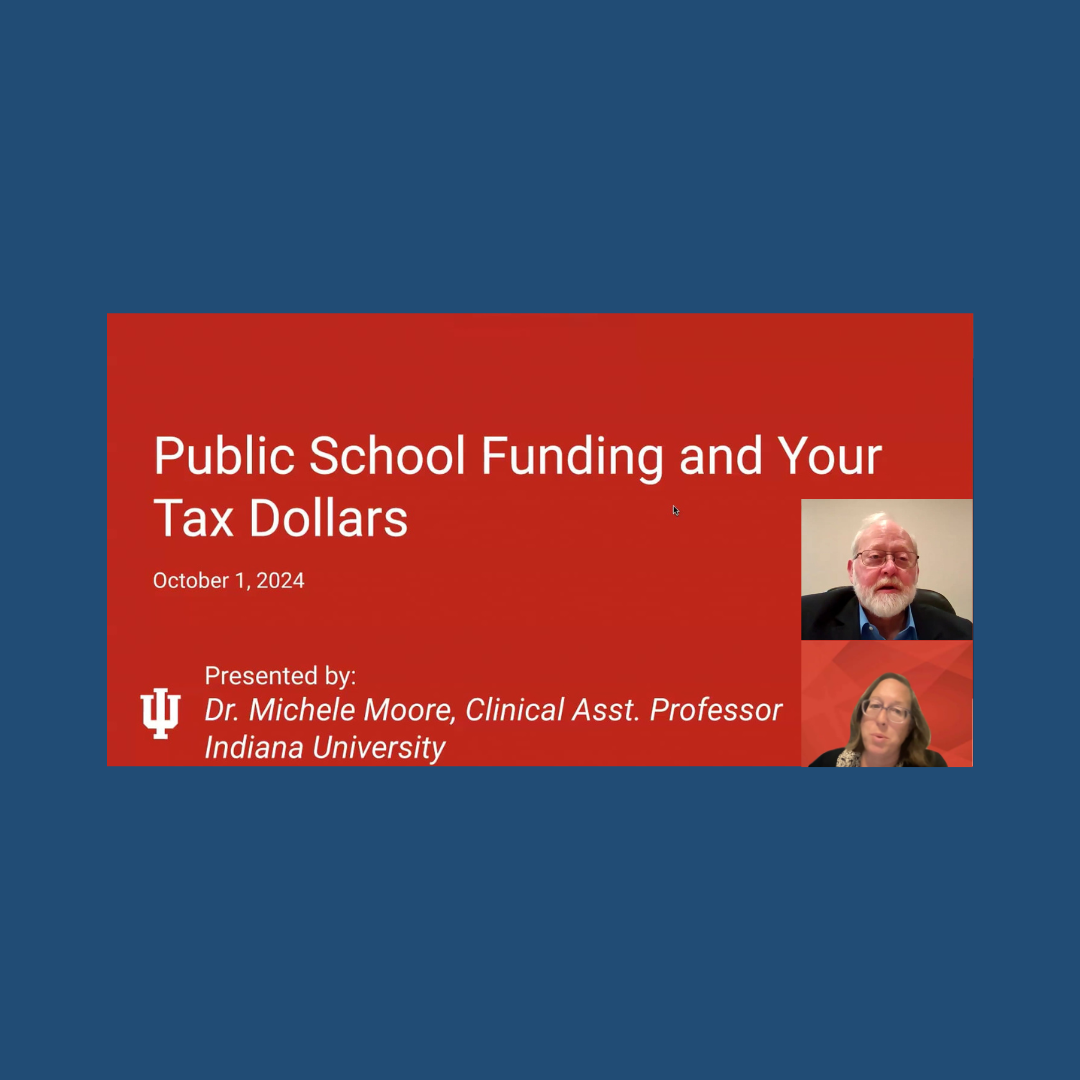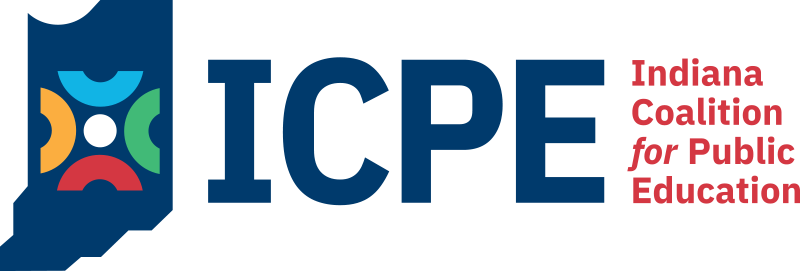Indiana Public School Funding 101

On October 1, ICPE hosted “Indiana Public School Funding 101” with school finance experts Dr. Michele Moore and ICPE board member Marvin Ward. Below you’ll find a recap with links to the information that was discussed:
But they’re my taxes! Nope. Unfortunately, they are not. This 1-hour presentation covers school funding and where all the money comes from and how that money can be used. There is then a deep dive into the weeds of topics such distressed schools issues with tax abatements and TIF districts, and unexpected costs for schools.
Topics covered:
- Where do schools get their money?
- Education funding sources and how state funding is tied to Average Daily Membership (ADM) count
- Textbook rental and curriculum materials and how this is underfunded by the state
- Education Fund to Operation Fund transfers
- Operations fund and how it varies from school to school
- What is the Debt Services Fund?
- What is the Referendum Fund?
- How does charter and private school funding work?
- The competition for students and the importance of nice school facilities – Two-thirds of the school districts have declining enrollment in Indiana
- The risk of not increasing taxes through debt and operation funds and how school buildings will suffer
- Tax abatement – Where companies don’t have to pay taxes or pay on a graduated scale and how that affects funding going to local schools
- TIF – tax increment financing – the tax payments in a TIF district only go to the town or county and not the school districts.
- Debt service funds – 40/80 rule
- Fiscally distressed school corporations and the DUAB – Distressed Units Appeals Board – All 290 schools are reviewed by this board.
- Fiscal cliff and the end of ESSER funding.
- The importance in your school district having a well-monitored 5-year cash flow plan for revenue and expenditures for each of the funds. (State revenue for school year changes 4 times in a year.) You need an 8-15% cash balance at the end of the year as the revenue lags at the start of the year.
- How delaying capital improvements will lead to more bonds and more debt
- Property casualty insurance rates increase
